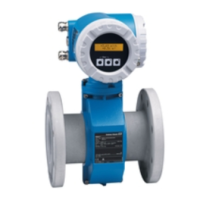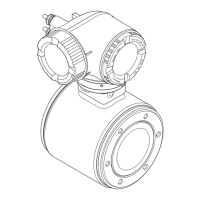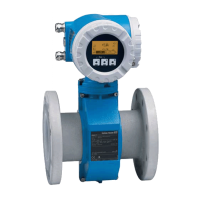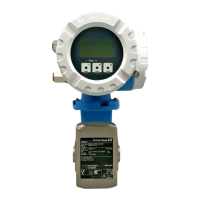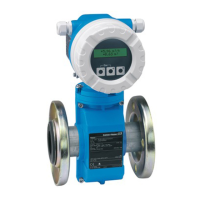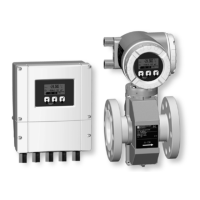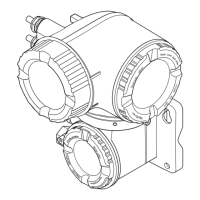Operating conditions (continued)
Ambient conditions
Ambient temperature
–25...+60 °C (Transmitter and sensor)
• An all-weather cover should be used to protect the housing from
direct sunlight when mounting in the open. This is especially important
in warmer climates and with high ambient temperatures.
• Due to the danger of the transmitter electronics overheating,
the transmitter and sensor are to be mounted separately with high
ambient and fluid temperatures (see Figure).
Storage temperature
–10...+50 °C (preferably at +20 °C)
CIP cleanable
Promag A, H, F → Yes (observe maximum temperature)
SIP cleanable
Promag A No
Promag H Yes (observe maximum temperature)
Promag F No
Degree of protection
(EN 60529)
IP 67 (NEMA 4X)
Option: IP 68 (NEMA 6P) for sensor A and F
Shock and vibration
resistance
Accelleration up to 2 g / 2 h per day; 10...100 Hz
Electromagnetic
compatibility (EMC)
According to EN 50081 Part 1 and 2 (interference emission) /
EN 50082 Part 1 and 2 (interference immunity) as well as to NAMUR
recommendations
Process conditions
Fluid temperature
The fluid temperature range depends on the sensor lining:
Promag A
–20...+130 °C PFA
Promag H
–20...+130 °C PFA with EPDM gasket
–20...+150 °C PFA with Silicone gasket
Promag F
–40...+130 °C PTFE (Teflon), DN 15...600
–20...+120 °C Soft rubber (EPDM), DN 25...2000
0...+ 80 °C Hard rubber, DN 65...2000
(see also Figure
“Ambient temperature”
)
(continued on next page)
-40
-20
020
40 60
80
0
20
40
60
80
100
120
-20
-40
140
Temperature range
only for the remote
version available.
PTFE (Teflon)
Soft rubber (EPDM)
Hard rubber
Ambient temperature [°C]
ba009y54
Fluid temperature [°C]
9 Technical Data Promag 33
110 Endress+Hauser
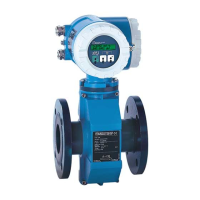
